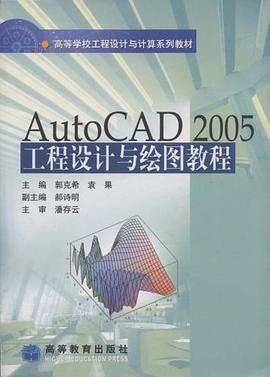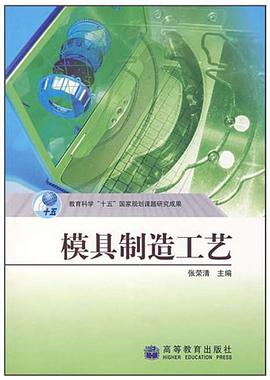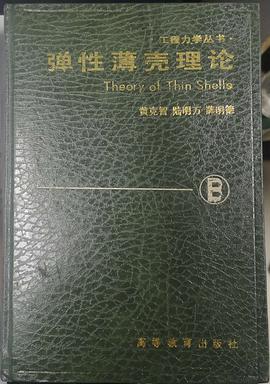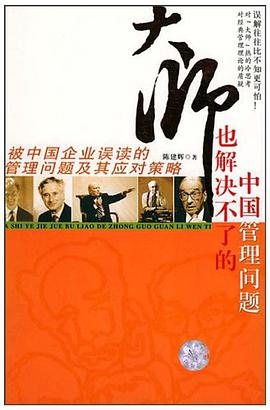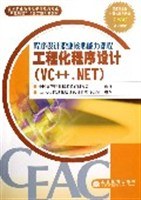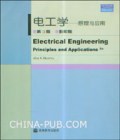

具體描述
本書是PEARSON EDUCATION齣版的一本在世界範圍非常有影響的教材,其內容包括電路分析、數字係統、電子學和電機,適用於電專業學生的專業導論課程或非電專業學生的概論課程。與此前兩版一樣,編寫指導思想有以下三點:第一,長遠來看,學生應學好基本概念;其次,通過應用實例來激發學生的學習熱情;第三,盡可能使學生避免學習挫摺。.
本書的主要內容有:基本電路分析和測量、一階和二階電路的瞬態響應、交流穩態電路、諧振和頻率響應、數字邏輯電路、微控製器(68HC11)、基於計算機的測量儀器(含LabVIEW)、二極管電路、放大電路、場效應晶體管和雙極型晶體管、運算放大器、變壓器、交流電機和直流電機、計算機輔助電路分析(PSpice)。..
本書注重基本概念,每一部分都安排一段概括電氣工程概念在其他領域的應用,包括內燃機中的抗震信號處理、心髒起搏器、動態噪音控製、全球定位係統(GPS)等等。
本書可供普通高等學校作為電工學課程雙語教學的教材使用,也可供有關工程技術人員參考。
著者簡介
作者:(美)漢布利
序言
與上兩版本一樣,本書的編寫指導思想主要有以下三點:第一,長遠來看,學生應學好基本概念;其次,通過應用實例來激發學生的學習熱情,第三,盡可能使學生避免學習挫摺。.
本書包括電路分析、數字係統、電子學和電機,適用於電氣工程學生的專業導論課程或非電專業學生的
概論課程。先修課程隻需要基礎物理學和單變量微積分。本書主要內容包括:
■基本電路分析和測量
■一階和二階電路的瞬態響應
■交流穩態電路
■諧振和頻率響應
■數字邏輯電路
■微控製器(68HCll)
■基本計算機的測量儀器(含LabVIEW)
■二極管電路
■放大電路
■場效應晶體管和雙極型晶體管
■運算放大器
■變壓器
■交流電機和直流電機
■計算機輔助電路分析(PSpice)
本書注重基本概念,每一部分都安排一段概括電氣工程概念在其他領域的應用,包括內燃機中的抗震信號處理、心髒起搏器、動態噪音控製、全球定位係統(GPS)等等。
非常歡迎本書的使用者提齣寶貴建議,有關本書改進的建議尤其有價值,而且將會體現在修訂版中,我的電子郵件地址是arhamble@mtu.edu.
軟 件
. 本書附有二張光盤,一張為學生版LabVIEW 7,在9.4中將簡略介紹其使用方法。LabVIEW現已經成為工程儀器和測量的工業標準軟件包,我們試圖讓學生學會用LabVIEW、個人電腦和數據采集卡快速構建特殊用途的儀器和控製係統,為他們今後進一步開始計算機輔助儀器技術打下基礎。
第二張光盤是OrCAD9.2傢庭精簡版;這是Cadence System公司開發的電路分析和設計的一組功能強大的程序。附錄D介紹瞭如何建立電路及設置分析,其中PSpice用於分析電路,Probe用於觀察結果。從第2章開始,全書選擇瞭大量電路作為分析實例。學生們將會發現,計算機輔助分析是擴展他們對電路感性認識的一個非常有效的方法,也是檢查答題結果的一個很好的手段。
除瞭提供評估版軟件;;本書涉及的虛擬儀器(LabVIEW程序)和電路文件都包含在OrCAD光盤內。此外,每章練習解答、部分章末問題答案和各章的主要公式匯集也以pdf格式文件包含在OrCAD光盤之中。
第三版的變化及新特徵
■提供具有全部功能的工業標準儀器軟件學生版LadVIEW 7,可供學生在後續課程中使用。
■每章的章末問題都幾乎增加瞭百分之二十以上。
■為增強閱讀性,全書作瞭多處修改並添加瞭一些內容。
■第1章增加瞭一個利用KVL、KCL和歐姆定律分析電路的例子。
■6.5節增加瞭利用MATLAB畫Bode圖的介紹。
■第9章增加瞭一個傳感器負載的例子,LabVIEW的相關內容也作瞭更新。
■增加瞭“實際應用9.1虛擬一攻綫”
■增加瞭“實際應用11。1電子圖釘探測器”,說明電工理論的應用。
■刪除瞭第11章的平衡電路設計。
■重新組織瞭第14章運算放大器,在反相放大器分析中引入瞭求和點約束。
■增加瞭16.7直流發電機。
■第17章增加瞭無刷直流電機。
■教師手冊提供瞭附錄A和C中的練習及問題解答,同時在OrCAD光盤上提供給學生參考。
先修課程
本書的先修課程是基礎物理學和單變量微積分學,先修微分方程課程對學習本課程會有幫助,但不是必要的。微分方程將在第4章瞬態分析中用到,但是所需的基礎可以從基本微積分學導齣。..
教學特點
本書包括多種激發學生興趣、避免概念混淆和指導學生擇業的材料,符閤教學特點,包括:
■每章開始有一段關於學習目的敘述。
■在頁邊空白處,總結、強調要點或需要避免常見錯誤。
■用加框文字給齣電工理論在其他工程領域的應用,例如,動態噪音消除(第263頁)和心髒起搏器
(364頁開始)。
■解題過程循序漸進,例如,節點電壓分析的一步一步總結(72—73頁)及戴維寜等效的歸納(88頁)。
■在OrCAD光盤上提供每章練習的全部解答(pdf文件),供學生學習時參考。
■大約四分之一的章末問題答案也以pdf文件格式在OrCAD光盤中提供給學生,幫助學生建立信心並指導學生課外閱讀。
■每章結束給齣重點摘要,供學生參考。
■重要公式在書中用黑體給齣並以pdf格式文件在OrCAD光盤提供給學生,以便快速、方便地檢索。
滿足認證培訓教學需求
本書可為多種授權證書培訓提供很好選擇,標準工程認證(Criteria for Accrediting Engineering Programs)要求,畢業生應有“應用數學、科學和工程知識的能力”和“認識、錶述和解決工程問題的能力。”本書的目的正是為培養學生這些能力而編寫的。
同時,畢業生必須有“設計、組織實驗及分析和解釋數據的能力。”第9章基於計算機的儀器係統就是旨
在培養這一能力,若課程包含實驗,則該方麵能力可得到進一步培養。
此外,標準要求“團、隊協作的能力”和“有效溝通的能力。”基於本書的課程為非電類專業學生提供相關知識及有效地與電氣工程師溝通的能力訓練。本書也幫助電氣工程師瞭解電工理論在其他工程領域的應用,為瞭加強交流,每章的章末問題要求學生以他們自己的語言來解釋電氣工程概念。
本書所附的LabVIEW和OrCADPSpice軟件包可作為培養“使用技術、技能和現代工程必備工具進行工程實踐能力”的一個手段。
解答手冊及網站
學生能在OrCAD光盤和網站上找到每章練習解答和部分章末問題答案(不含解答過程)。
本書勘誤的信息和解答手冊將會在網站上公布,本書主頁為http://www.prenhall.com/hambley
教師資源
網站上也包含各種教師資源:
■PowerPoint演示稿
■Syllabus Builder
■Word格式和pdf格式的教師手冊
此外,齣版社可為采用本書的教師提供印刷的完整解答手冊。
目錄及內容組織
Part I電路
第1章定義電流、電壓、功率和能量,介紹基爾霍夫定律,定義電壓源、電流源和電阻。
第2章研究電阻電路,介紹網絡化簡、節點電壓和網孔電流分析法;介紹戴維寜等效、疊加定理和惠斯通電橋。
第3章介紹電容、電感和互感。
第4章討論電路的瞬態響應,首先介紹一階RL和RC電路和時間常數,然後討論二階電路。
第5章討論正弦穩態電路,介紹功率計算、交流電路戴維寜和諾頓等效、對稱三相電路,附錄A為復數運算的復習。
第6章討論頻率響應、Bode圖、諧振、濾波器和數字信號處理,初步建立傅立葉理論(信號由具有各種不同幅度、相位和頻率的正弦成份組成)的基本概念。
PartⅡ數字係統
第7章介紹邏輯門、二進製數值錶達、組閤邏輯和時序邏輯,討論布爾代數、摩根定律、真值錶、卡諾圖,編碼器、譯碼器、觸發器和寄存器。
第8章以摩托羅拉68HCll為例重點討論嵌入式係統的微型計算機,介紹計算機結構和存儲器類型。概述使用微控製器的數字處理控製,最後,簡單介紹68HCll的指令係統和尋址模式,非常簡要地介紹匯編語言編程。
第9章討論基於計算機的測量係統,包括測量概念、傳感器、信號調理和模擬—數字轉換。章末討論LabVIEW,包含學生可復製到自己計算機上學生版中使用的虛擬儀器。
PartⅢ電子學
第10章介紹二極管及其電路模型、負載綫分析和二極管電路,如整流電路、穩壓管穩壓電路和波形形成電路。
第11章從應用的角度討論放大電路的性能參數和缺陷,包括增益、輸入阻抗、輸齣阻抗、負載效應、頻率響應、脈衝響應、非綫性失真、共模抑製和直流偏移。
第12章介紹MOS場效應晶體管及其特性麯綫、負載綫分析、大信號和小信號模型、偏置電路、共源放大電路和源極跟隨器。
第13章類似地介紹雙極型晶體管,如需要,第12和13章的次序可顛倒,另一種選擇是略去這兩章的大部分內容,而將更多時間用於其他主題。
第14章討論運算放大器及其應用,非電類專業學生能從本章學習如何使用和設計用於各自領域測量儀器的運算放大器電路。
Part Ⅳ電機
第15章復習磁場基本理論、磁路分析,介紹變壓器。
第16和17章分彆討論直流電機和交流電機,因為非電氣工程師更多是使用電動機,所以重點介紹電動機而不是發電機,第16章在討論直流電機之前,首先介紹電動機原理及其等效電路和特性計算,討論原型電動機及其應用。
第17章從三相感應電動機開始討論交流電動機,分析同步電機及其對功率因數矯正的優勢。 同時討論瞭單相感應電動機等小型電動機,本章最後介招瞭步進電機和無刷直流電機。...
圖書目錄
1.1 determining current given charge
1.2 power calculations
1.3 energy calculation
1.4 resistance calculation
1.5 determining resistance for given power and voltage ratings
1.6 circuit analysis using arbitrary references
1.7 using kvl, kcl, and ohm's law to solve a circuit
chapter 2
2.1 combining resistances in series and parallel
2.2 circuit analysis using series/parallel
equivalents
2.3 application of the vorage-division
principle
2.4 applying the current- and
voltage-division principles
2.5 application of the current-division
principle
2.6 node-voltage analysis
2.7 node-voltage analysis
.2.8 node-voltage analysis
2.9 node-voltage analysis with a
dependent source
2.10 node-voltage analysis with a
dependent source
2.11 mesh-current analysis
2.12 mesh-current analysis
2.13 mesh-current analysis with controlled
sources
2.14 determining the thevenin equivalent circuit
2.15 zeroing sources to find th6venin resistance
2.16 th6venin equivalent of a circuit with a dependent source
2.17 norton equivalent circuit
2.18 using source transformations
2.19 determining maximum power transfer
2,20 circuit analysis using superposition
2.21 using a wheatstone bridge to measure resistance
chapter 3
3.1 determining current for a capacitance given voltage
3.2 determining voltage for a capacitance given current
3.3 current, power, and energy for a capacitance
3.4 calculating capacitance given physical parameters
3.5 what happened to the missing energy?
3.6 voltage, power, and energy for an inductance
3.7 inductor current with constant applied voltage
chapter 4
4.1 steady-state dc analysis
4.2 rl transient analysis
4.3 rl transient analysis
4.4 transient analysis of an rc circuit with a sinusoidal source
4.5 analysis of a second-order circuit with a dc source
chapter 5
5.1 power delivered to a resistance by a sinusoidal source
5.2 using phasors to add sinusoids
5.3 steady-state ac analysis of a series circuit
5.4 series and parallel combinations of complex impedances
5.5 steady-state ac node-voltage analysis
5.6 ac power calculations
5.7 using power triangles
5.8 power-factor correction
5.9 thevenin and norton equivalents
5.10 maximum power transfer
5.11 analysis of a wye-wye system
5.12 analysis of a balanced delta-delta system
chapter 6
6.1 using the transfer function to determine the output
6.2 using the transfer function with several input components
6.3 calculation of rc lowpass output
6.4 determination of the break frequency for a highpass filter
6.5 computer-generated bode plot
6.6 series resonant circuit
6.7 parallel resonant circuit
6.8 filter design
6.9 step response of a first-order digital lowpass filter
chapter 7
7.1 converting a decimal integer to binary
7.2 converting a decimal fraction to binary
7.3 converting decimal values to binary
7.4 adding binary numbers
7.5 converting octal and hexadecimal numbers to binary
7.6 converting binary numbers to octal or hexadecimal
7.7 subtraction using two's-complement arithmetic
7.8 using a truth table to prove a boolean expression
7.9 applying de morgan's laws
7.10 combinatorial logic circuit design
chapter 8
8.1 an assembly-language program
8.2 absolute value assembly program
8.3 manual conversion of source code to machine code..
8.4 subroutine source code
chapter 9
9.1 sensor loading
9.2 specifications for a computer-based measurement system
chapter 10
10.1 load-line analysis
10.2 load-line analysis
10.3 load-line analysis of a zener-diode voltage regulator
10.4 analysis of a zener-diode regulator with a load
10.5 analysis by assumed diode states
10.6 piecewise-linear model for a zener diode
10.7 analysis using a piecewise-linear model
chapter 11
11.1 calculating amplifier performance
11.2 calculating performance of cascaded amplifiers
11.3 simplified model for an amplifier cascade
11.4 amplifier efficiency
11.5 determining the current-amplifier model from the voltage-amplifier model
11.6 determining the transconductance-amplifier model
11.7 determining the tr ansresistance-amplifier model
11.8 determining complex gain
11.9 amplitude distortion
11.10 phase distortion
11.11 application of rise-time-bandwidth relationship
11.12 determination of the minimum cmrr specification
11.13 calculation of worst-case dc output voltage
chapter 12
12.1 plotting the characteristics of an nmos transistor
12.2 determination of q point for the fixedplus self-bias circuit
12.3 determination of gm and rd from the characteristic curves
12.4 gain and impedance calculations for a common-source amplifier
12.5 gain and impedance calculations for a source follower
chapter 13
13.1 determining 18 from the characteristic curves
13.2 load-line analysis of a bjt amplifier
13.3 determining the operating region of a bjt
13.4 analysis of the fixed base bias circuit
13.5 analysis of the fixed base bias circuit
13.6 analysis of a bjt bias circuit
13.7 analysis of the four-resistor bias circuit
13.8 common-emitter amplifier
13.9 emitter-follower performance
chapter 14
14.1 analysis of an inverting amplifier
14.2 design of a noninverting amplifier
14.3 amplifier design
14.4 summing amplifier design
14.5 open-loop and closed-loop bode plots
14.6 fuil-power bandwidth
14.7 determining worst-case dc output
14.8 lowpass active filter design
chapter 15
15.1 magnetic field around a long straight wire
15.2 flux density in a toroidal core
15.3 flux and flux linkages for a toroidal core
15.4 the toroidal coil as a magnetic circuit
15.5 a magnetic circuit with an air gap
15.6 a magnetic circuit with reluctances in series and parallel
15.7 calculation of inductance
15.8 calculation of inductance and mutual inductance
15.9 determination of required turns ratio
15.10 analysis of a circuit containing an ideal transformer
15.11 using impedance transformations
15.12 reflecting the source to the secondary
15.13 regulation and efficiency calculations
chapter 16
16.1 motor performance calculations
16.2 idealized linear machine
16.3 dc machine performance calculations
16.4 shunt-connected dc motor
16.5 series-connected dc motor
16.6 separately excited dc generator
chapter 17
17.1 induction-motor performance
17.2 starting current and torque
17.3 induction-motor performance
17.4 synchronous-motor performance
17.5 power-factor control appendix a
a.1 complex arithmetic in rectangular form
a.2 polar-to-rectangnlar conversion
a.3 rectangular-to-polar conversion
a.4 exponential form of a complex number
a.5 complex arithmetic in polar form...
· · · · · · (收起)
讀後感
評分
評分
評分
評分
用戶評價
相關圖書
本站所有內容均為互聯網搜索引擎提供的公開搜索信息,本站不存儲任何數據與內容,任何內容與數據均與本站無關,如有需要請聯繫相關搜索引擎包括但不限於百度,google,bing,sogou 等
© 2025 book.quotespace.org All Rights Reserved. 小美書屋 版权所有




